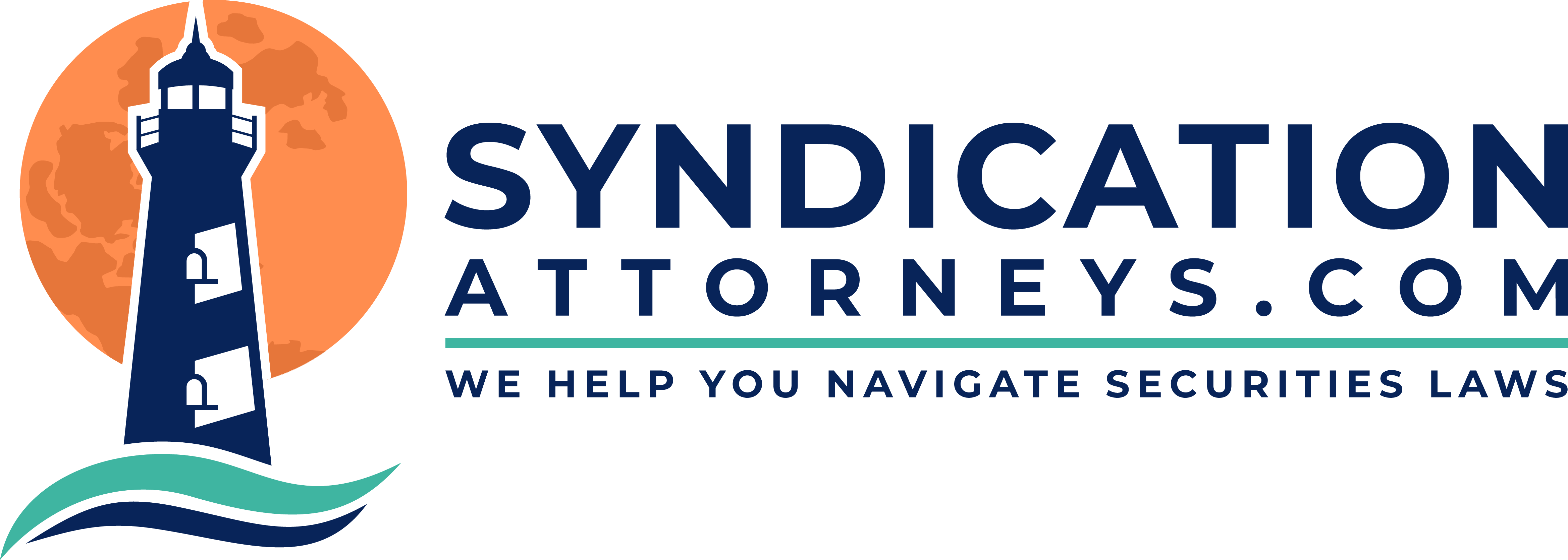There are a number of ways to split money with investors in a syndication. Real estate syndicators commonly use a couple: a straight-split scenario, or a preferred return scenario.
There Are Many Ways to Split Money With Investors
Let’s take a closer look at two common methods to split money with investors so you can determine which method may work best for you in your real estate syndication.
Straight Split Scenario
In the straight split business model, the manager (which may be its own LLC) retains a 1% ownership of the company. The manager also typically receives a percentage (for example, 40%) of the distributable cash from the investment company (Investor LLC). The manager would pay a nominal amount for its Class B interests (for example, ~$1,000 total).
The manager may also receive fees, including:
- An acquisition fee
- A management oversight fee
- A refinance fee
- A disposition fee
Most clients take some, but not all of these fees.
Preferred Return Scenario
An alternative structure is the preferred return scenario. This model for splitting money with investors in a syndication allows the promoter to retain a larger percentage of ownership in the company.
The following example shows a preferred return scenario for a two-Class offering with a 60/40 split. This structure typically entails a Class A/B structure in the Investor LLC. Class A members receive a preferred return. There is a separate Manager LLC.
Class A
Class A members contribute 100% of the capital necessary to fund the company. However, they only purchase 60% of the ownership interests.
Class A members get a preferred return. That means they get paid their returns before the Class B members. The returns can be cumulative (accruing even if not paid) or noncumulative (usually calculated on an annualized basis and paid quarterly).
For instance, if you offer an 8% cumulative preferred return, Class A members would get paid all of the distributable cash until they have received a 2% return (calculated against their “unreturned capital contributions”) each quarter.
If the return is cumulative, any arrearages would be made up at the next distribution event prior to paying current returns. Or they could be deferred until sale of the property. That means arrearages are made up from equity on sale, after paying back the Class A capital contributions, but before splitting equity with Class B.
If the return is noncumulative, Class A members get all of the distributable cash needed to make up their preferred return. Deficiencies do not accrue.
For voting purposes, the Class A members’ percentage interests are calculated either as a percentage of the Class A interests or as a percentage of the total interests in the company. The decision as to which one applies depends on who is entitled to vote on a specific matter, as spelled out in the operating agreement.
Class B
Class B includes members of the manager and/or others who provide services to the company. They keep 40% of the ownership interests in the company in exchange for a nominal amount (for example, $1,000 total).
Class B members only get a portion of the distributable cash after Class A members receive their annualized preferred returns for the year. However, this can be calculated and paid in quarterly increments. As such, Class B returns are subordinate to Class A’s preferred returns.
Manager
The manager entity earns fees but not distributions and does not keep an ownership interest or voting rights in the company. If the manager is removed, the manager’s fees are pro-rated between the prior manager and the new manager, but distributions to its members (as Class B interests) remain undisturbed.
In this scenario, it is important that you take a management oversight fee (usually 1% to 2% of the gross receipts for a specified offering, or 1% to 2% of the money raised if a blind pool).
Why use the Class A/B structure?
There are several reasons to use the Class A/B structure:
- To preserve your distributions if the manager is removed. We suggest you take “ownership” interests, because if you are removed or resign as the manager, it will help preserve your right to distributions. We suggest you take the Class B ownership interests in your individual name, a trust or the name of another company you own, etc., to distinguish owners of the Class B interests from the “manager” (or its members. That is not required. However, it is better from a liability standpoint if the manager doesn’t actually “own” anything.
- To segregate fees from distributions. Since you will pay for your Class B interests ($1,000-$2,000 total), you will establish a cost basis in your Class B interests. Earnings on your Class B ownership interests may be taxable at capital gains rates, versus your manager’s fees, which will be taxed at ordinary income rates (meaning you may have to pay self-employment tax on those earnings).
- You can grant Class B interests to other people. Since Class B owns 40% of the interests, the manager can allocate those interests as it sees fit amongst persons who provide services to the company. We write our documents to allow the manager to do this without a vote of Class A members and without having to bring in such persons as a member of the manager entity. This could be useful for people who bring you deals, etc., but to whom you don’t want to give a management role (although people who raise money should be a member of the manager). It might not work for a loan guarantor, as the bank usually wants the loan guarantor to be a member of the manager.
Why Can’t You Just Do a 60/40 ownership split instead of a preferred/subordinate return?
Class B ownership interests must be subordinate to your investors (Class A), meaning Class A gets paid a specific return before Class B gets paid anything. If Class B (or the manager) retains 40% ownership of the company on par with (versus subordinate to) the Class A members, Class B could owe tax on 40% of the total amount of money raised at the end of the first year of operations. The company is worth the amount of money you raised (regardless of the value of the real estate), and since Class B would “own” 40% of it, it could be attributed to Class B as taxable income in the first year of operations.
Because subordinate interests don’t get paid anything until the preferred interests get their return, the earnings a Class B member might receive are unascertainable (as they could be zero) and are thus not taxable until they are actually received.
Why Should You Take A Management Oversight Fee?
We recommend you take a management oversight fee. This is typically 1% to 2% of gross collected revenue or a monthly lump sum.
Here’s why we recommend this:
- For tax reasons. The earnings from your management oversight fee will be considered ordinary income for tax purposes since these earnings are for current services, and may therefore be subject to self-employment taxes. Since the A/B structure distinguishes management interests from Class B ownership interests, it could bolster your argument to the IRS that they be taxed at different rates, making the lower capital gains tax rate applicable to your Class B distributions, which will be the majority of your earnings.
- For cash flow. Taking this fee will give the manager monthly cash flow from the time the property is acquired, so members of the manager don’t have to wait for distributions in order to get paid. The manager could use this fee to hire employees, pay its overhead expenses, etc. The manager’s fees are treated as an expense of the company, so they get paid before you determine distributable cash. However, you do have to factor them into your projections along with other expenses associated with the property (i.e., property management fees, utilities, taxes, insurance, etc.).
- To pay a new manager if you are removed or resign. This fee can be pro-rated between the old and new manager, leaving the Class B ownership interests retained by members of the manager undisturbed.
- To preserve your right to distributions if the manager is removed or resigns, you can demonstrate to anyone challenging your right to continued distributions that your “ownership interests” (for which you “contributed” your past services leading up to acquisition of the property plus $1,000) are separate and distinct from the “management oversight fees” that you are paid to actively manage the company.
- To give members of the manager an individual vote in more than just unanimous consent items. In this structure, the Class B members can be given the right to vote along with the Class A members on all matters except for removing the manager. Removal of the manager still requires a vote of a specified percentage (usually 75%) of just the Class A interests. All other votes could include Class A and Class B interests, who get to individually vote according to their respective percentage interests in the company.
Example of a Distribution Schedule
Let’s look at an example showing a preferred return that reflects a 60/40 split, but which is structured to give Class B subordinate interests.
Distributions from Operations
- First, the Class A members will receive all distributable cash until they have received an 8% annual, cumulative preferred return, calculated against their unreturned capital contributions.
- Optional First, the Class A members will receive any arrearages in their 8% annual, cumulative preferred returns from prior years.
- Second, the Class B members may receive a subordinate, cumulative annual cash distribution of up to 5.3% calculated against the Class A members’ unreturned capital contributions. (Note: This amounts to an approximate 60/40 split between Class A and Class B.)
- Third, any remaining distributable cash will be split between all of the members, pro-rata, in proportion to their respective percentage interests in the company.
Note: In the event there is insufficient cash available to pay the Class B members their 5.3% cash distribution at the time a distribution is made to the Class A members, the Class B members could either: a) forfeit the deficiency or b) have it made up from a later distribution (such as a refi or sale).
Distributions from Capital Transactions
In the case of refinance or disposition of the property or dissolution of the company (after payment of expenses and liabilities):
- First, the Class A members will receive any arrearages in their 8% annual, cumulative preferred returns.
- Second, the Class A members will receive all of the distributable cash as a return of capital until they have received 100% of their unreturned capital contributions or the distributable cash is exhausted, whichever comes first.
- Third, the Class B members may receive a subordinate, cumulative annual cash distribution of up to 5.3% (equivalent to a 60/40 split) calculated against the Class A members’ unreturned capital contributions.
- Fourth, any remaining distributable cash will be split among all of the members pro-rata, in accordance with their respective percentage interests in the company.
We suggest you discuss these scenarios with your CPA to see if he or she agrees or can provide further insight or suggestions.
NOTE: This information is of a general, educational nature and may not be construed as legal advice pertaining to your specific offering, exemption or situation. Any such advice must be sought from your own attorney pursuant to an attorney-client relationship, after consideration of your specific facts or questions. At Syndication Attorneys, PLLC, we will be happy to discuss your investing goals with you. You can schedule a free, 30-minute consultation by clicking this link.

